The modern medical marvel that is antibiotics has become so natural and ingrained, it’s hard to imagine being without them. The ravages of bacterial infections that the world endured before penicillin are the stuff of ghost stories.
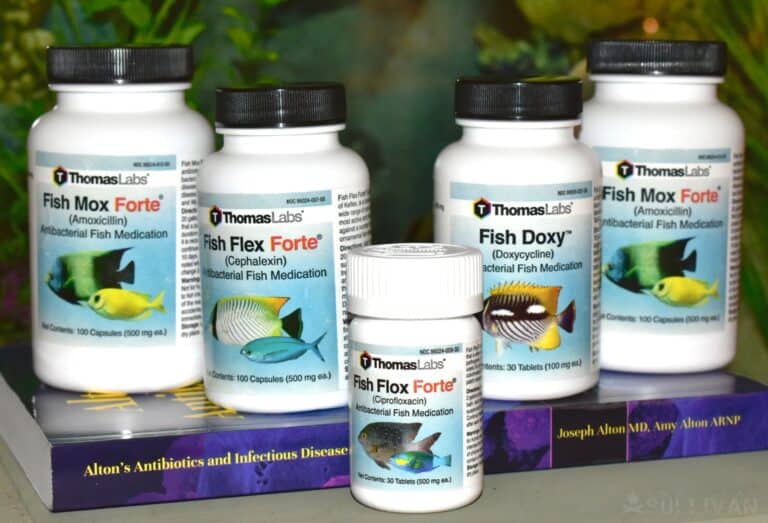
We have started to get a taste of a world without antibiotics, as resistance has grown because of overuse and improper use.
Just look to the headlines of stories about Methicillin-Resistant Staphylococcus Aureus (MRSA) infections. The helplessness that doctors approach these infections with is just a shadow of a world without antibiotics.
This is a world that can be our lives again in case of a long-term disaster scenario. A world where a simple cut gets infected and spreads. Soon sepsis sets in (an infection in the bloodstream) and death is close to follow.
Preppers should position themselves to manage emergencies from food shortages to power outages. This should include medical emergencies as well.
Along with your stores of bandages and dressings, consider a stockpile of antibiotics. They are available now, and need a home in every prepper’s collection of medical gear.
Table of Contents
Disclaimer
I am not a doctor and this is not medical advice. Before stockpiling any antibiotics, talk to your doctor and be absolutely sure you’re not allergic to any of them, and that you know when and how to take them, and when NOT to take them. Neither the author nor this website and its owner shall be held responsible for any side effects as a result of applying the information in this article.
Safety and a Warning
First a word of warning. While the grid is up and your local doctor still has an open door, use them. If there is a crisis that denies you access to proper medical care, then you owe it to yourself and your family to use whatever resources are at hand.
Second, you must use antibiotics properly. Our current situation of growing resistance is due to overuse and improper use.
Some patients are insistent that their malady can only be solved through the use of antibiotics. And doctors prescribe them to pacify the patient.
This situation is compounded by agricultural uses. Farms use antibiotics to combat overcrowding, and as a growth stimulant.
The more we expose bacteria to antibiotics, the more opportunities they have to adapt. Couple this with improper use and we have a problem.
As antibiotics build up in a system, they kill off the weakest bacteria then kill off stronger bacteria as exposure increases. Doctors prescribe antibiotics for a time period designed to completely kill off the bacteria.
If a patient does not take the full course of antibiotics, then only the strongest and most resistant bacteria are left alive. All too often people take antibiotics until they feel better.
Then they stop. The problem is, the infection is still present and a new, more aggressive course is required to treat the infection.
Given enough time, bacteria can adapt and evolve resistance to almost any level of antibiotics. In 2015, scientists performed an experiment where E. Coli grew in a petri dish over 12 days.
They filled the petri dish with growth media that included two common antibiotics in bands of increasing concentrations. By the end of the experiment, the E. Coli overcame all doses of each antibiotic.
It is imperative that you use any medicine correctly, especially antibiotics. Always use the proper dose for the proper time period.
Antibiotic Uses
As stated, antibiotics have very specific uses. Not to state the obvious, but they only combat bacterial infection.
- ❌ They don’t fight viruses and are useless against them.
- ❌ They don’t fight the common cold and are useless against it.
- ❌ They don’t fight fungal infections and are useless against them.
- ❌ They aren’t a panacea of medicine. There’s a lot of things they don’t do.
- ✅ They only combat bacterial infections. Period.
Have I made my point?
Once you have identified that you have a bacterial infection, the first task is to plot a course of action. This is best done with a medical text and training.
Modern antibiotics can be very specific. That is, they may only work on a specific spectrum of bacteria, and have little to no effect on others.
Based on the type of bacteria, specific antibiotics will be recommended. If you are lucky, several antibiotics will be effective. Additionally, your reference material will recommend a specific dose and duration. You must stick to this regimen as best as possible.
Never stop a course of treatment when the symptoms subside. By doing so you just create a breeding ground for stronger and more resistant bacteria.
As always, seek professional help when it is available. Only if a doctor, nurse, or other medically knowledgeable person is not available, should you attempt treatment on your own.
Resources
Don’t go into the world of pharmaceuticals unarmed. As they say, knowledge is power. This stands for all medicines and is especially important for antibiotics.
At best, you will use the wrong antibiotics and the condition won’t improve. At worst, you will use the proper one incorrectly.
This will allow the infection to subside for a time. It will eventually come back with resistance to the treatment and will require a more aggressive approach. This causes you to draw deeper from your medical supplies.
Disclosure: This post has links to 3rd party websites, so I may get a commission if you buy through those links. Survival Sullivan is a participant in the Amazon Services LLC Associates Program. As an Amazon Associate, I earn from qualifying purchases. See my full disclosure for more.
The first resource for antibiotic I use is the Physicians Desk Reference or PDR. This doorstop of a reference covers almost all the medicines available, not just antibiotics. The great thing about the PDR is that it gives you recommended dosages and usages for both adults and children.
Once you get familiar with the layout and descriptions, you can apply the PDR to any over the counter or prescription drug. Please note, you don’t need a modern copy of the PDR (it can be rather expensive).
Hit your local used book store for a copy. The vast majority of the information does not change from year to year.
The PDR does not provide any information on diagnostics or other disease-related identification. You will need other references for that.
Speaking of diagnostics…
The prepper communities own Dr. Joe Alton and Amy Alton of Doom and Bloom have published their own guide on the use of antibiotics.
This guide specifically targets the prepper and survival community. It presents both the use of antibiotics, and the diagnostics required prior to using them.
Within “Alton’s Antibiotics and Infectious Disease” there are descriptions of various infections, their diagnosis, and how to address them.
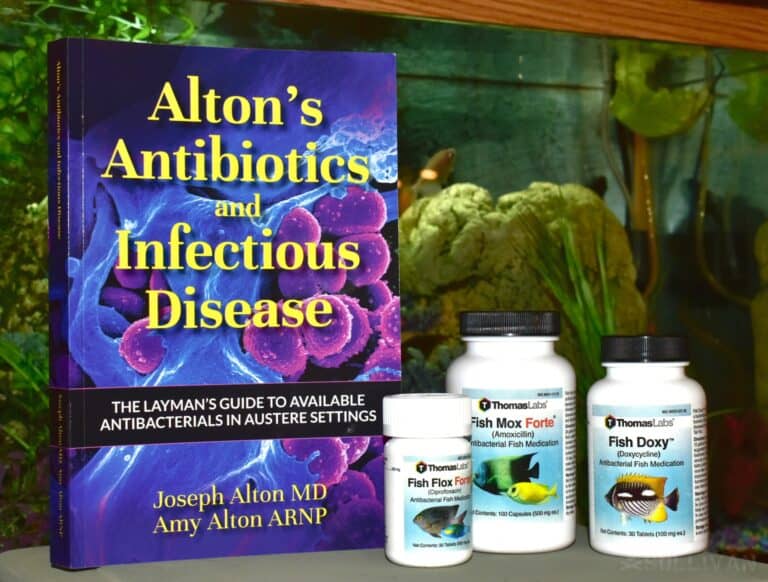
Most importantly, this reference guide discusses the various classes of antibiotics, how to use them, and what infections to use them on. If you choose to stockpile antibiotics, I cannot recommend this book enough.
Sourcing Antibiotics
Ok, you’ve decided that antibiotics are a current gap in your prepper stash. That’s a good thing. The next issue is where and how to get your hands on a few common antibiotics.
The bad news is antibiotics are ‘only’ available with a prescription. You are more than welcome to describe your prepper lifestyle to your doctor and explain your desire to be prepared for rough times. Ya never know!
If they share your opinions, and if they have a high level of trust in you, and if they have a lenient policy for prescriptions of this nature. They may just prescribe you bulk antibiotics as a prophylactic against harder times.
That’s a lotta ifs.
So instead, let’s talk about fish!
You have fish, right? A fish tank? An aquaponics system? Maybe a Koi Pond that is not connected to a local stream? Riiiiight? Great! Let’s get some medicines for your fish.
Some veterinarian antibiotics happen to be made in the exact same doses as human antibiotics. They also happen to be made in the same factories. They also happen to be made with the exact same markings. That’s because they are the exact same thing… for your fish.
Do you see where I’m going with this?
Luckily for your end of the world preparations, you can purchase fish antibiotics from several vendors without a prescription… for your fish.
The key is to select fish antibiotics that are “pure.” That is, they don’t have any other additives for your fish (e.g., antifungals, extra vitamins, etc.). Joe Alton and Amy Alton’s book has a wonderful section on this.
A quick internet search will show two main providers of fish antibiotics: Thomas Labs, and Fish Aid. Both produce “pure” medicines. Don’t limit yourself to these manufacturers, as there are more on the market. Just review the labels before your purchase.
Online retailers will be your best resource. Just take note Amazon doesn’t carry them. Not sure why. Walmart carries several options from both Thomas Labs and Fish Aid. Your best bet will be pet-oriented websites. One site with the best variety is FishMoxFishFlex.com.
You can also visit your local pet supply stores. The local chains in my area do not carry them, however, some smaller, independent shops do. In fact, I have had the best luck at my local Tractor Supply.
Keep your eyes out and you’ll be surprised at what you will find.
Which Antibiotics to Stockpile
Several antibiotics are available through the above means. Each has a specific use, and can treat several conditions. This is just a summary. Refer to your reference materials for a complete description of their best use.
Warning! Be sure you’re not allergic to any of these before stockpiling them, as so many people are. Talk to your doctor first and do some tests.
Amoxicillin
Amoxicillin is available as Fish-Mox and Fish-Mox Forte. The difference between the two variants is the dosage. Fish-Mox contains 250mg of amoxicillin in its tablets, while the Forte version has 500mg per tablet.
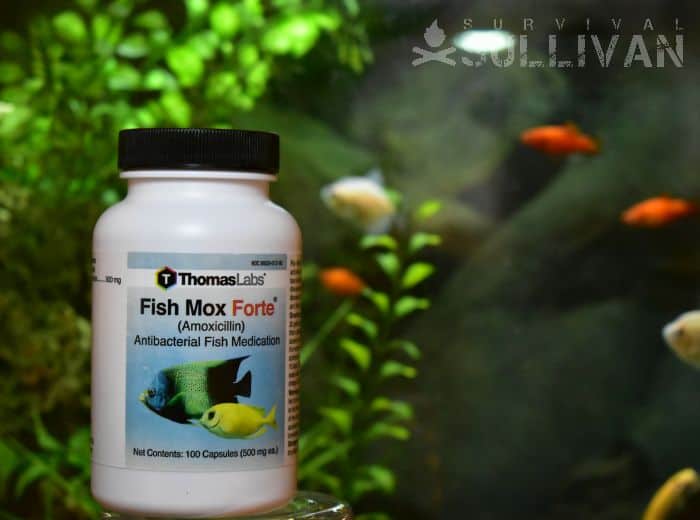
Amoxicillin is one of the most commonly prescribed antibiotics. We primarily use it for respiratory, dental, and bladder or kidney infections. It also has a use in combating sexually transmitted diseases.
Ciprofloxacin
Ciprofloxacin (Cipro) was made famous during the airborne Anthrax attacks that were attempted via the mail system. Fish-Flox is the fish equivalent of Cipro:
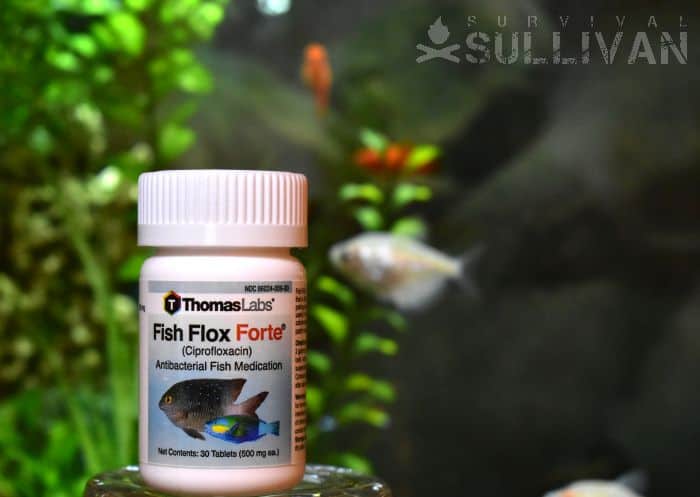
Doctors prescribe Cipro for urinary tract infections, sinus infections, and skin infections. It is also widely prescribed for pneumonia that is resistant to other antibiotics.
Penicillin
Penicillin was the first manufactured antibiotic and was used to significant effect in World War II. In pre-Penicillin World War I, the death rate from pneumonia was 18 percent. Through the use of Penicillin, that rate dropped to 1 percent in World War II.
Fish-Pen is the over-the-counter equivalent of Penicillin. Doctors use Penicillin to treat a wide array of infections. These include skin infections, Tonsillitis, ear infections, and dental infections.
Unfortunately, the overuse of Penicillin has caused a broad resistance to it. Doctors rarely use it as a first choice.
Clindamycin
Clindamycin has found favor for those that have allergies to the ‘cillin’ antibiotics, including Penicillin and Amoxicillin. Fish-Cin is the available substitute.
Your doctor will prescribe clindamycin for infections associated with animal bites, pneumonia, and malaria. It is also prescribed for soft tissue, dental, abdominal, pelvic, and blood infections.
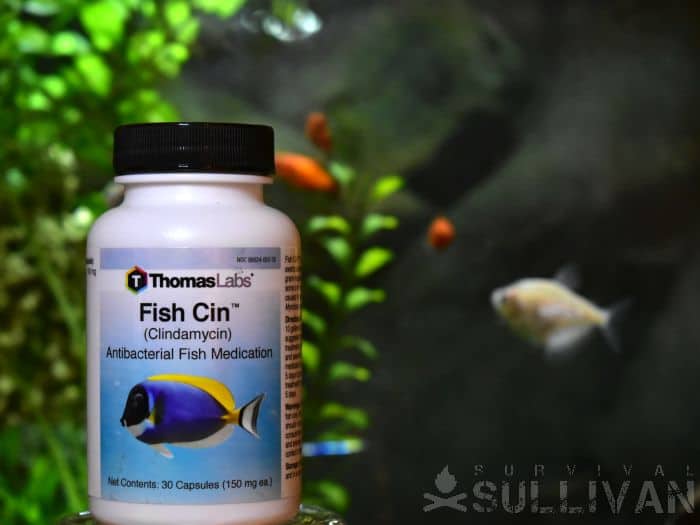
A blood infection, septicemia, is particularly dangerous. If there are any signs of septicemia, it must be treated quickly and effectively.
Azithromycin
Azithromycin is not available as a fish treatment, but rather as a bird medicine. Bird-Zithro is the available version of azithromycin.
Azithromycin is prescribed for a wide variety of bacterial infections including those causing food poisoning, tonsillitis, sinusitis (sinus infection), sexually transmitted disease (gonorrhea, chlamydia, and syphilis).
It is also prescribed for bacterial bronchitis and pelvic infections. Finally, it is a treatment for some types of Strep Throat.
Doxycycline
Fish-Doxy, the doxycycline equivalent vet medicine, is a broad-spectrum antibiotic. It is therefore used to combat several different infections.
Doxycycline should be familiar to those in areas affected by Lyme disease. It is one of the first antibiotics prescribed for Lyme Disease. It can also be prescribed to fight urinary tract infections, respiratory infections, dental infections, and even The Plague. It is also a treatment for MRSA infections.
Ampicillin
Ampicillin, like several of the antibiotics on this list, can be used to treat infections of the throat, ears, sinus, bladder, and Gastro-Intestinal tract. As it is, a ‘cillin’ drug it should not be taken by those allergic to penicillin.
The preferred delivery of Ampicillin by doctors is via IV as this is its most effective delivery. Oral prescriptions are still very effective and therefore widely used.
Fish-Cillin is the fish equivalent to Ampicillin.
Cephalexin
Fish-Flex is the fish variant of Cephalexin. Like Fish-Mox, Fish-Flex comes in 250mg and 500mg doses. Refer to your reference material for the proper dose for the infection you are treating.
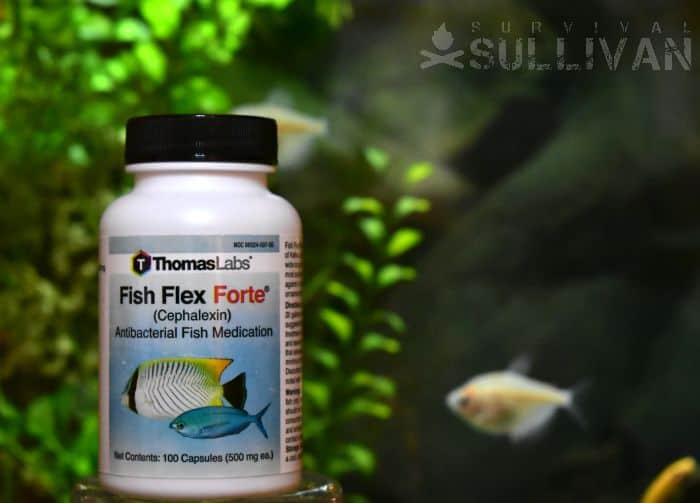
Cephalexin is an antibiotic that is widely used for skin and soft tissue infections. This includes cuts, burns, and other similar injuries.
Cephalexin is also used for upper respiratory infections and prostate and some joint and bone infections.
Sulfa
Sulfa drugs are an alternative to antibiotics. Sulfamethoxazole Trimethoprim is a broad-spectrum antibiotic that is often prescribed with other antibiotics as a ‘one-two’ punch against infections.
It is commonly prescribed for kidney, bladder, skin, and wound infections. It is also useful in treating bronchitis and streptococcus pneumonia.
Fish-Sulfa Forte is the fish equivalent.
Storing Your Antibiotics
Once you have your medical resources and have accumulated a selection of antibiotics, the next step is to store them. Treat your antibiotics like most of your other prepper gear. To keep them for the long-term, store them cold and dry.
Again, a basement is your friend. If you don’t have a basement, the back of your refrigerator is an excellent choice. Anywhere with a consistent temperature is good. Avoid hot temps, and large temperature swings.
Just seal them up and tuck them away. An ammo can with a few desiccant packs is the perfect storage container! Always keep them in the original packaging. If you are going the ammo can route, or any other sealable container, I highly recommend sealing in a copy of Dr. Bones’ book. Or at least a copy of the dosage charts.
The next question is how long can you store antibiotics? The good news is a long time! All medications, human or otherwise, have expiration dates. These dates are there to protect the manufacturer., not you. In most cases, the efficacy of medications remains at 100% well after the expiration date.
Here is an excellent video by Dr. Bones explaining expiration dates and their impact on your prepper stockpile.
Alternatives to Antibiotics
All is not lost if you cannot find antibiotics. There are several other potential treatments if you find yourself in a desperate position.
Topical
Topical infections happen when bacteria take hold in a scrape, burn, or cut in your skin. A poorly cleaned, or uncleaned abrasion can become infected and spread in days. Even in the best circumstances, mistakes happen. Have a topical treatment on hand.
SilvaSorb and silver gels like it are effective treatments for most basic skin infections. A light coating once a day is usually enough to keep infections at bay.
Similar to silver gels is colloidal silver wash. A major advantage of colloidal silver is that you can make it at home. Two pieces of silver and three nine-volt batteries are all you need.
Finally, one cannot speak enough about honey! It’s the ancient superfood and heal-all. The sugar content of honey makes an inhospitable pH for most bacteria. Honey also maintains the best environment for healing. You can even buy honey impregnated bandages. Better yet, make your own.
Internal
There is a path for internal natural antibacterials that runs straight through the garlic patch. A few cloves of garlic, either raw or as a tea do the job.
My favorite treatment when sick is to mash a clove and let it sit out for 30 minutes, then toss it down with a glass of water. This is my go-to treatment for colds, as garlic is also anti-viral.
Your spice cabinet is also filled with natural pharmaceuticals. Turmeric, oregano, and ginger can all be used to fight internal infections. There are several treatments (e.g. teas and soups) for these spices.
Hit the internet to find one that works for you. I also recommend getting a book or two to add to your library.
Conclusion
We are truly blessed to live in a world with antibiotics. Death by infection is slow, painful, and can be horrific. It’s even worse to watch. One of the things that keep me up at night is a day when our modern medicines are no longer viable against bacterial infections.
The good news is, for the moment, antibiotics still work. The better news is, if you know where to look, they are available!
Preparations come in all shapes and sizes, food, security, and medical. You owe it to yourself to add antibiotics to your medical supplies. This choice, however, must come with education.
Antibiotics are not to be used haphazardly. Understand which ones to purchase, when to use them, and most importantly how to use them. Once you have done your homework stock up!
Few preparations will pay off like a course of antibiotics when the doctor is no longer making house calls. If we ever cross the line of no return, antibiotics will be worth more than gold, bullets, or food.

My passion is empowering people with the knowledge to prepare for personal, local, and regional emergencies. I went to school for engineering and computer science and spend my days in the security industry.

Ampicillin shouldn’t be on the list. It’s the injectable form of Amocicillin. Using injectables requires a level of training most don’t have or have access to.
Thanks for the comment! I did some additional digging on the differences between Ampicillin and Amoxicillin. Both are relatives to Penicillin and broad-spectrum antibiotics, however, they are different drugs. Amoxicillin is preferred as an oral antibiotic has it has good absorption in the GI system. Ampicillin is slightly less effective as an oral antibiotic and its preferred delivery is via intravenous or intramuscular. That does not prohibit its use as an oral antibiotic though. Amoxicillin can be delivered via IV, however, this is only done when oral delivery is not an option.
I hope this clarifies my inclusion of Ampicillin as an oral antibiotic.
Sorry,but it does come in capsule form. I have it in my supply
Happy to Finally find a source that Really informed me. A lot of questions were just answered.
Now, I have a task ahead of me.
Thanks!
How and where can I get these preparations in Spain?